01
My Lebanese Experience
When I first discovered that of thirteen million displaced Syrians, roughly half of these refugees are children, I was nagged by a question: Why was I so lucky to have grown up in California? There are millions of children not in school, struggling to cope with shattered lives, and many of them working full time to feed their siblings. I kept thinking about how the kid version of myself would fair in the shoes of these refugee children. It ate at me enough that when I got the opportunity, I packed my cameras and traveled to Lebanon.
I’ve now spent a large part of the last two years there directing a film about young refugee girls growing up in camps. Prior to beginning this project, I had never been to the Middle East, but I can honestly say that I will continue returning for the rest of my life. I instantly developed a love for Lebanese culture—its food, its zest for life, its music, its beaches, its history—and the centuries of wisdom ingrained in its people.
I’ve learned much about the region, and it has had much to teach. Beirut is an intellectual town. It holds many of the Middle East’s best universities and hospitals, including the renowned American University of Beirut. It is a diverse mixture of people, history and culture. Those who work in journalism, filmmaking, photography, art, writing and humanitarian efforts come from all over the Middle East—Egypt, Tunisia, Turkey, Jordan, Iraq and even Afghanistan. They spend time in Lebanon because it observes many of the freedoms we take for granted in the West. Gorgeous beaches find bikinis next to burkas. Its party culture is infamous, even during the civil war, and stories of nightclubs in bomb shelters are still told with nostalgia. Lebanon is, and has been for centuries, a social, cultural and political bridge between the East and West.
But of the main countries housing Syrian refugees, Lebanon may be the most complicated to understand. Unlike Turkey, Jordan and Iraq, where the U.N. and other iNGOs have built large camps, Lebanon has not declared an official refugee crisis precisely to keep these organizations from creating massive refugee cities. This decision is influenced by Lebanon’s history with refugees, first with Armenians fleeing Turkish genocide from 1915 to 1917, and then with Palestinians fleeing the 1948 Palestine War/Israeli War of Independence. The Lebanese have seen what it means for a people to have nowhere to return to and have witnessed firsthand how refugee camps built by the Office of the United Nations High Commissioner for Refugees (UNHCR) rarely become anything other than city-sized slums with temporary infrastructure, filled with people caught in limbo for generations. And according to the UNHCR, the average stay of a refugee in a camp is now seventeen years.
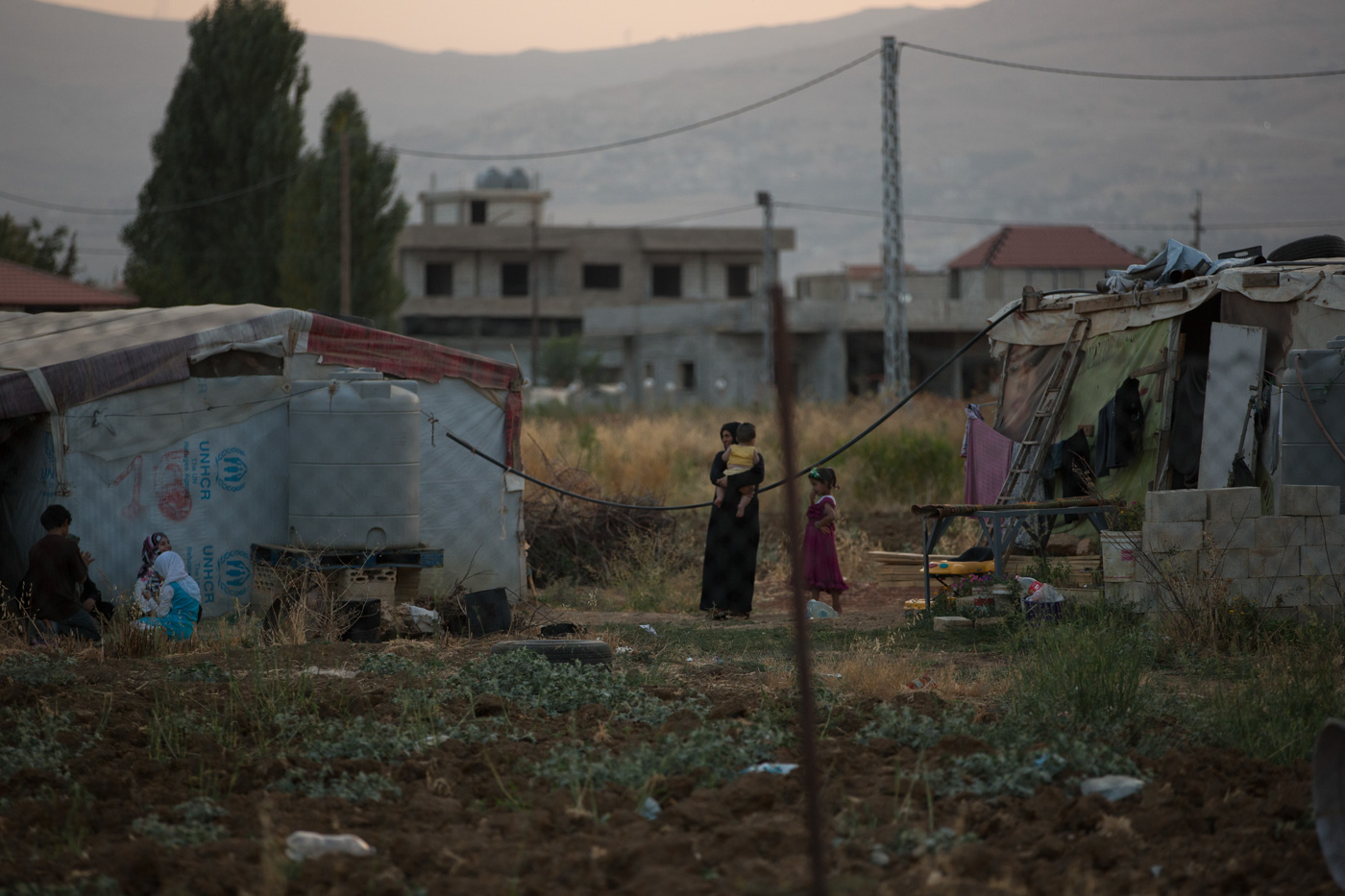
02
Khalid, My Host
I met Khalid on my first day of production, in one of the most inspiring places I’d ever seen. For complicated political reasons, informal schools for refugees in Lebanon can’t be called schools; instead they are referred to as “safe zones.” That day, I was standing in one of these education centers where refugee children were attending school in tents in the middle of an agricultural field.
To be fair, in comparison to other camps I’d visited, these kids are the lucky ones. Most of the camps in Lebanon—especially the newest ones—have little access to services, and certainly no school. This safe zone had been in service for several years and had formed a music class, drama workshops, and once a month, a yoga instructor from Beirut even visited with volunteers working with kids to express themselves through their bodies. All of this housed in a bunch of tents beside the potato fields in which many of those same children worked.
Child labor is a complicated issue as more refugees arrive in Lebanon. If children aren’t allowed to work, many of them and their families would go hungry, and malnutrition is already a massive problem. So Maria Assi, the COO of Lebanese aid organization Beyond Association brought schools to the fields so children could attend after work.
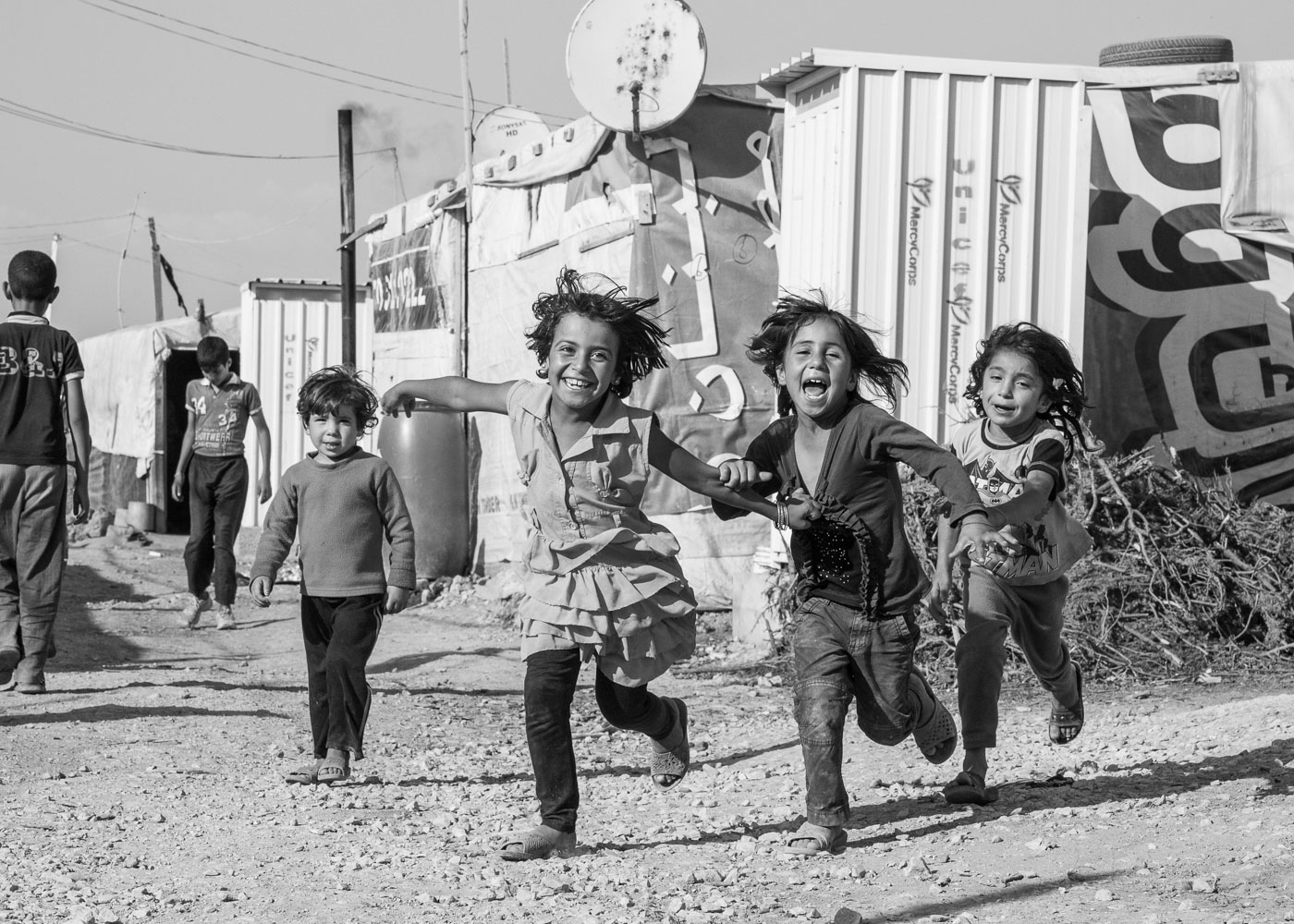
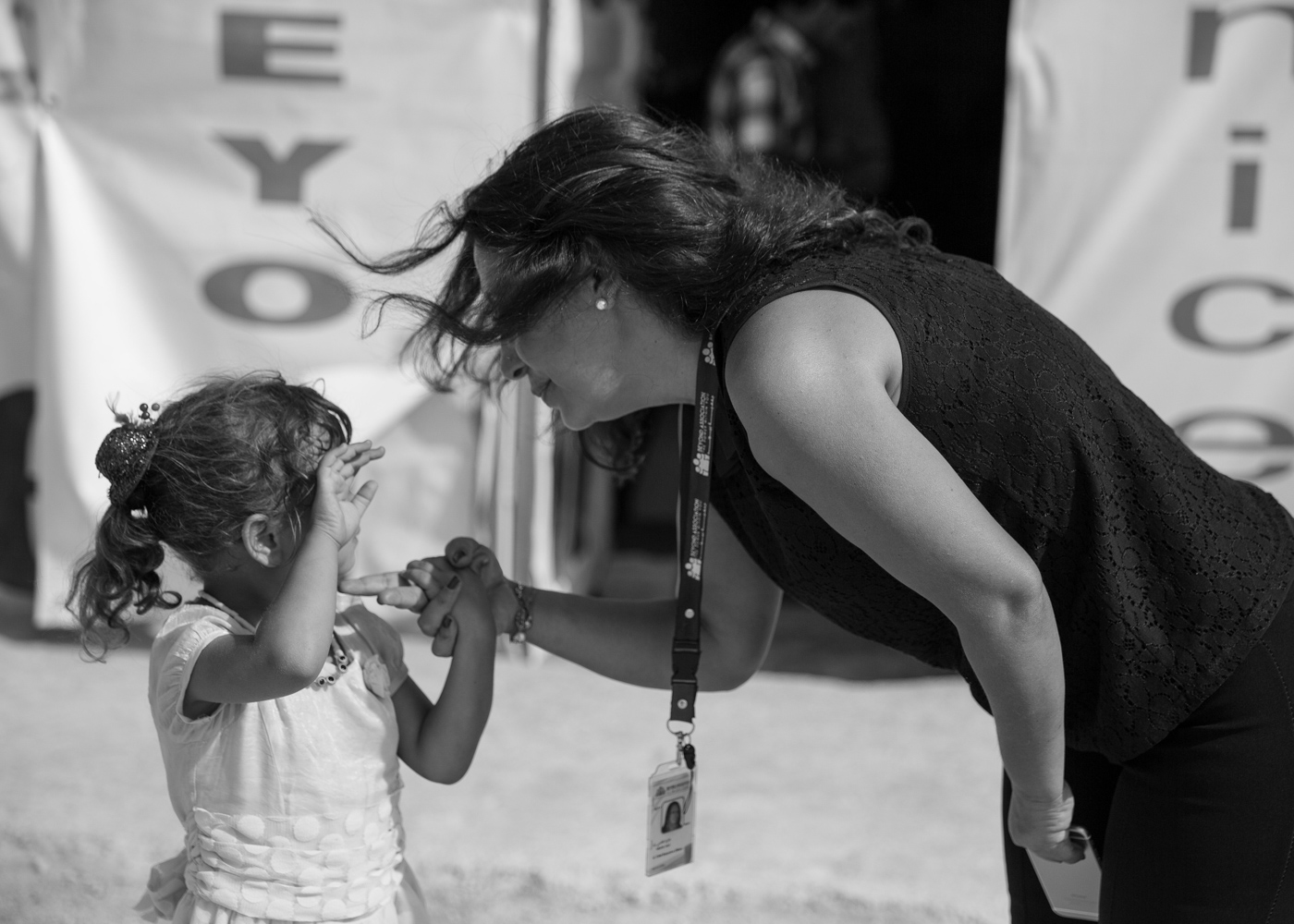
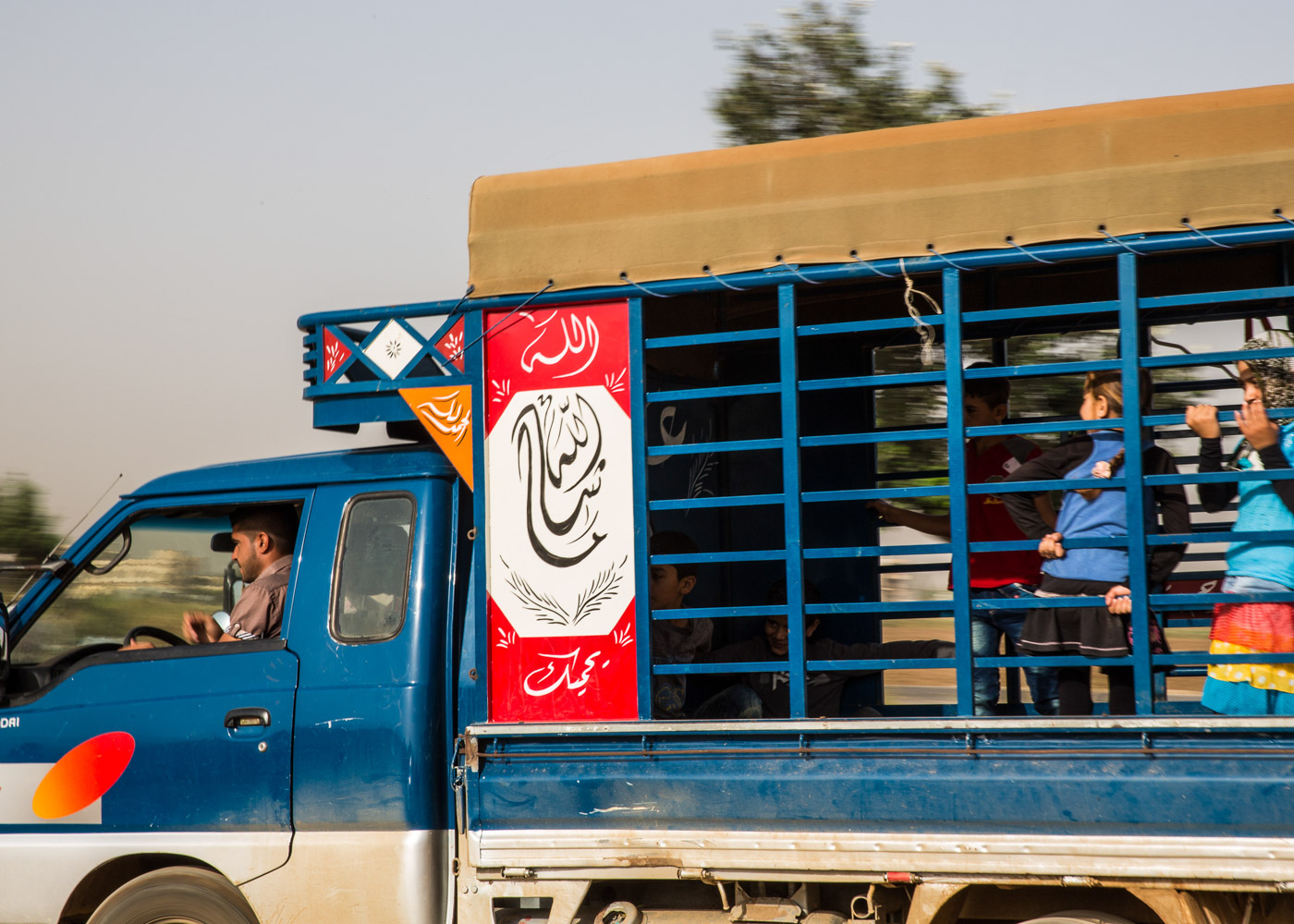
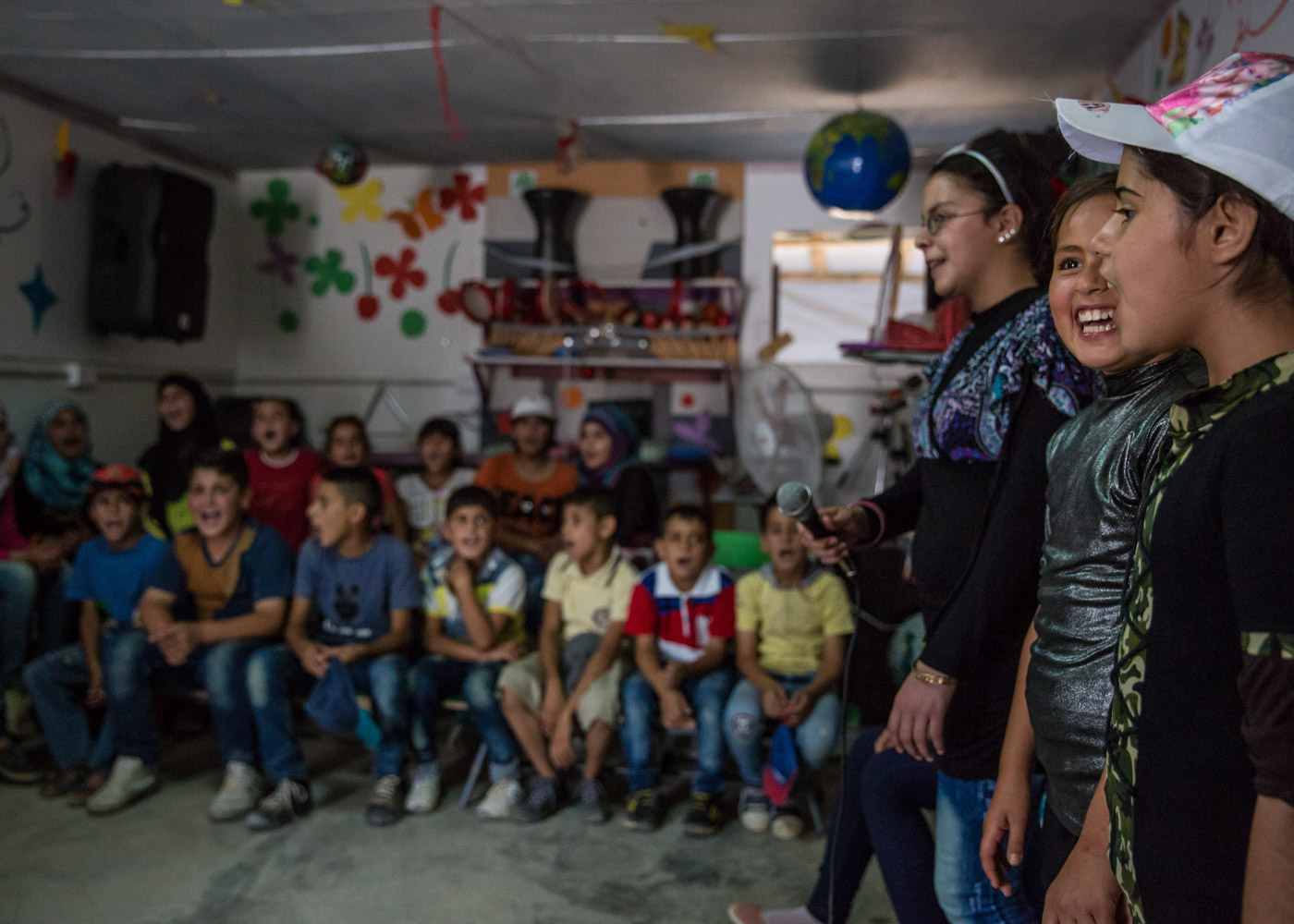
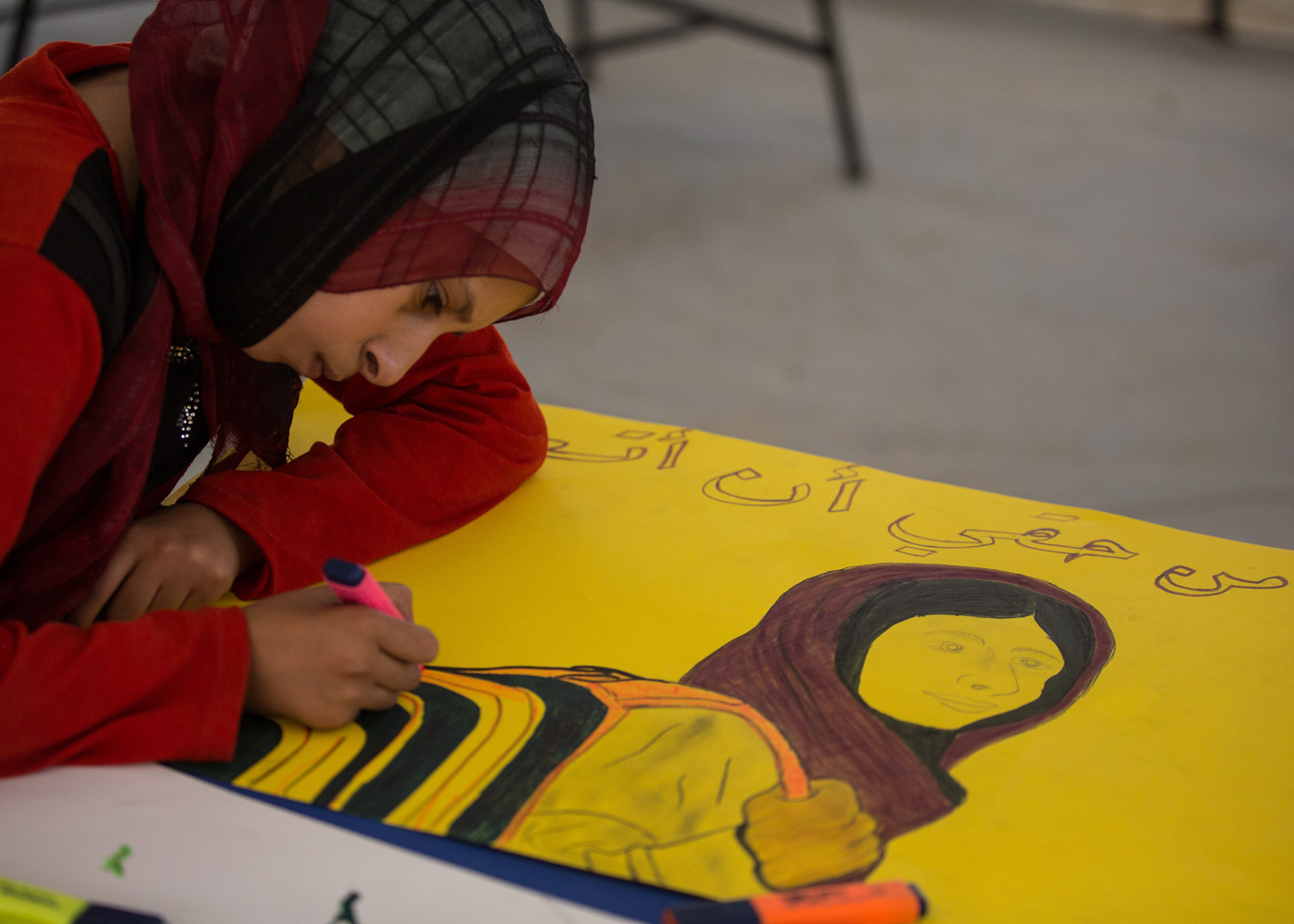
Khalid is both the art and Arabic teacher in this safe zone, where his own children attend his classes. Beyond Association has been keen to support Khalid in formalizing his art classes because of their effectiveness in helping children process trauma.
I didn’t speak a word of Arabic at that point, and he didn’t speak much English, but we bonded that day and I had a chance to get to know the family he is raising in this refugee camp. His daughter, Nada, is following in her father’s footsteps and becoming an artist. She nearly brought me to tears the first time I met her in class, explaining the self portrait she was drawing in which she wore a backpack containing everything she’d brought from her former middle-class life. Slaiman, Khalid’s son, had taught himself to play piano on a twenty-year-old Casio keyboard despite its missing a couple of keys. Each time I’ve visited since, he’s played me a new tune he’d learned.
Khalid’s mother doesn’t know how old she is—she’s likely somewhere in her late sixties—but she is always doing something. The first time I visited, I was struck by the flower and tomato garden exploding in the two meter wide space between their tent and their neighbor’s. She’d missed her garden in Syria so much, she’d set out to build and maintain one in the camp.
Child labor is a complicated issue as more refugees arrive in Lebanon. If children aren’t allowed to work, many of them and their families would go hungry, and malnutrition is already a massive problem.
03
Khalid’s Home
Walking into Khalid’s tent, I was shocked how comfortable and warm it was given this was winter. Winter in Lebanon’s Bekaa Valley is brutal; it’s cold enough for snow several times per year, and the frigid rain storms can wreak havoc, being the cause of death in the camp due to electrical fires and illness.
As a rule, Syrian families take the cleanliness and comfort of their tent homes seriously. But the difference between Khalid’s tent and others I’d seen was the fact that his tent was just built substantially better. The bottom half of his plastic sheeting walls were lined with half-inch styrofoam insulation. The floor was a woven plastic rug, which also seemed to help hold heat. His bathroom and kitchen, although rudimentary, were attached to the house, had concrete floors, and well-designed ventilation. There was no smell of the toilet. All of this sophisticated construction from a guy who taught himself out of necessity. Khalid has easily built the strongest tent in the camp, and has become an unofficial advisor to everyone—including the local education center where he works—on how best to construct in the camps.
To create a place that feels like home from scratch, in the middle of an agricultural field, with zero hope of running water, a flushable toilet, a hot shower, easily accessible heating energy, and nothing but scraps to use as material was something astonishing. I clearly understood that, like other families in the camp, were I in their circumstances, I’d be lining up to ask Khalid for his advice too.
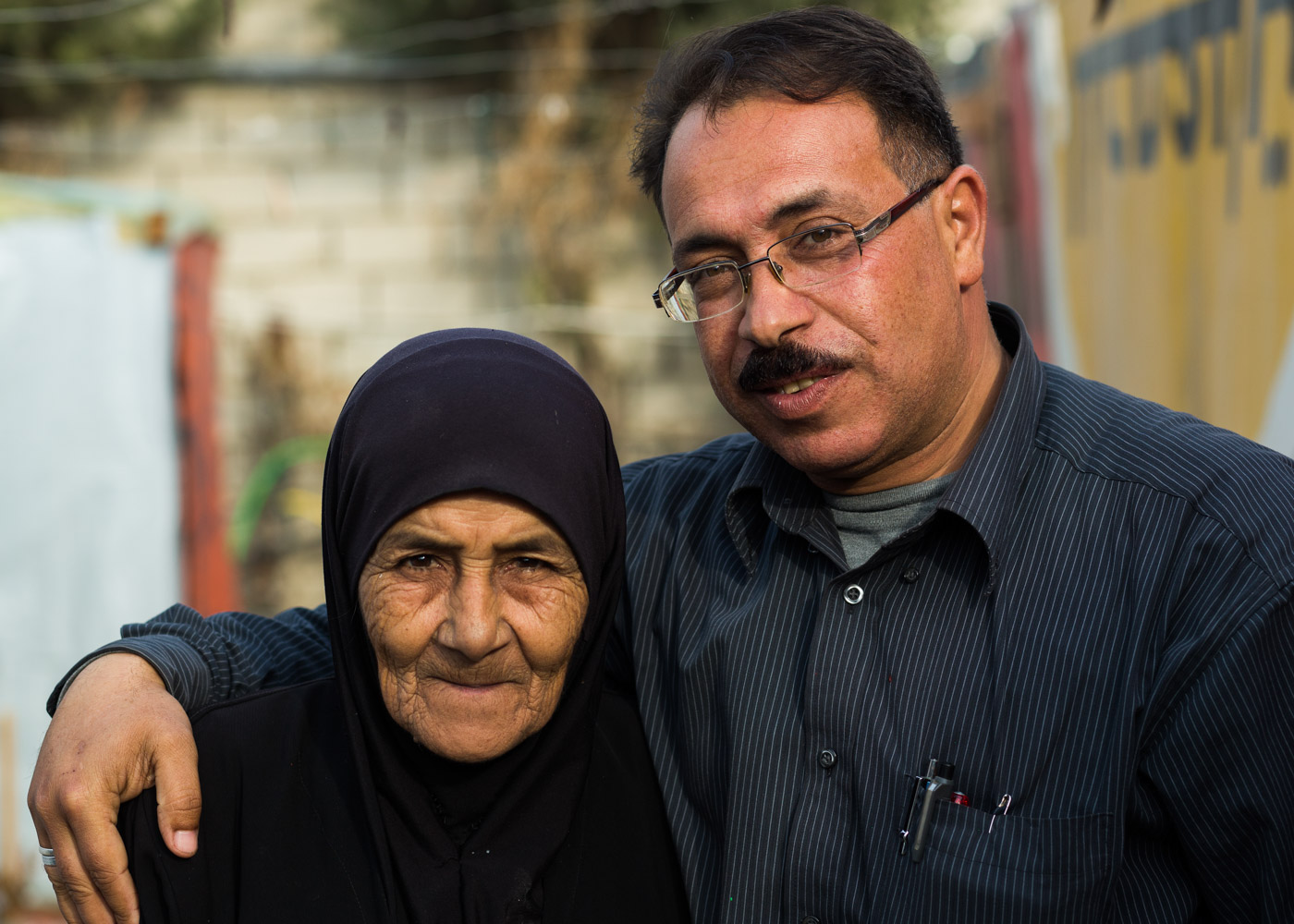
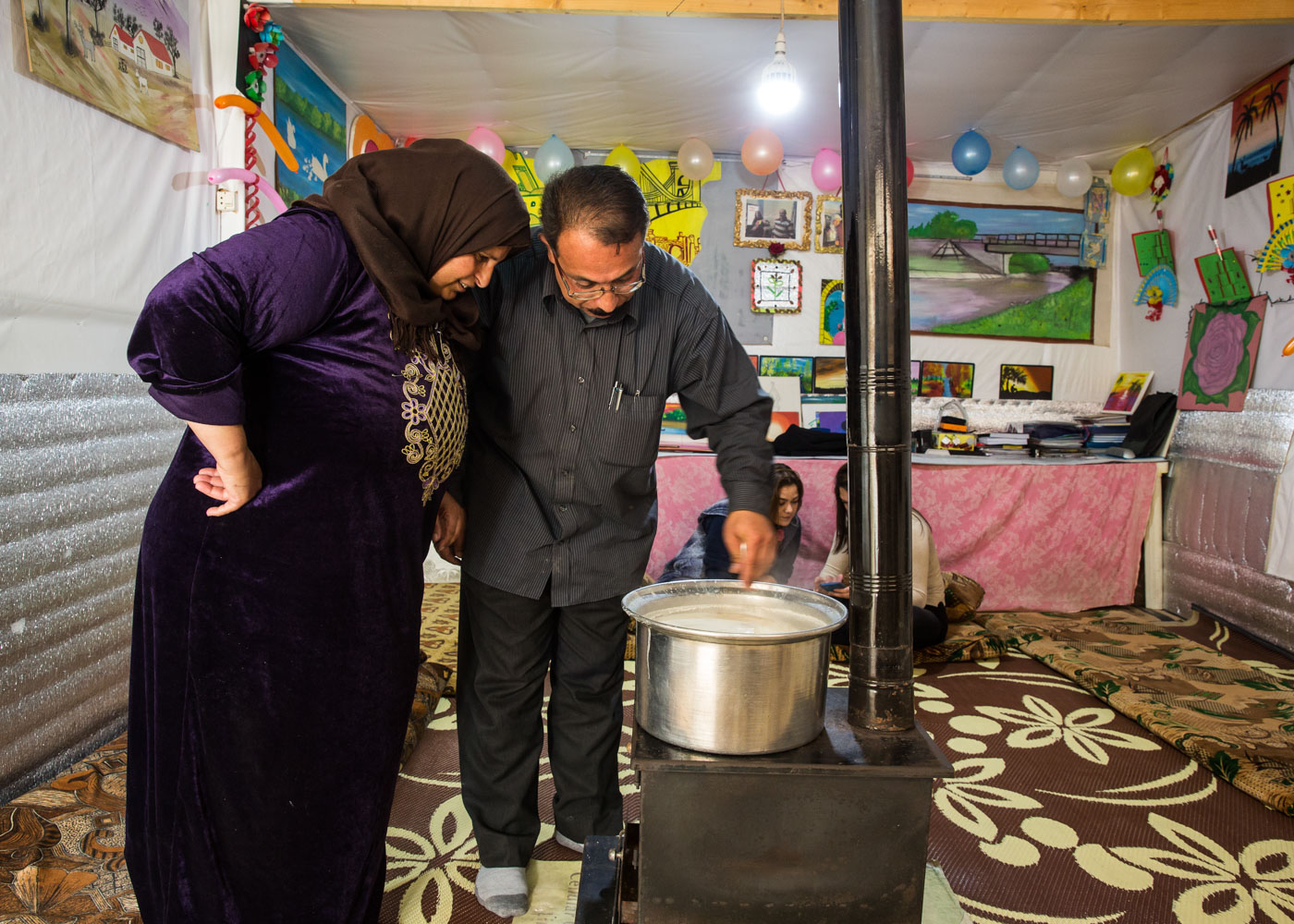
04
The Meal
Khalid’s kitchen is a narrow hallway at the back of the family tent. It has no windows and is very poorly lit; there is a single dim overhead fluorescent light, and some meager sunlight spills in from the doorway in the next room. To shoot the cooking I am forced to stand in their “wet” area, a small corner of the kitchen that has a water faucet and drain. The faucet is connected to the family’s water tank, and keeping that tank full is one of the several stresses that keeps Khalid up at night (thirst is a very real epidemic in a refugee camp. It’s a miserable feeling, and one I understood clearly in my first week, having packed too little water). This small area in the corner of the kitchen serves for drawing, cooking and drinking water, and the sink for washing dishes, cleaning, brushing teeth and bathing. As water is too precious to take a full shower, this means more of a washing up.
The little kitchen smells spectacular. Rice steaming, almonds toasting, golden raisins sauteing, all while ground meat is fried with Aleppo pepper and a homemade baharat spice mix that includes black pepper, allspice, paprika, sumac, ginger, cinnamon, nutmeg, cassia bark, coriander, cumin and cardamom. And all of this being cooked on the equivalent of two single-burner camping stoves.
“You have to cook with soul and with love. If you cook with sadness, the food is never as tasty,” Em Slaiman, Khalid’s wife, explains the secret behind her cooking to me.
Sometimes all a family has in the house is pita bread; it is toasted, sprinkled with olive oil, zaat’ar (and whatever love-magic is in that person’s hands), and served simply with hot, sweet Arab tea, and what results is exquisite. These simple offerings—this way of honoring and welcoming with so little materially, highlighted a warmth and authenticity—are ones I’ll remember for the rest of my life.
When the meal was ready, the main dish was presented in the main part of Khalid’s tent as a celebratory feast; it looked like art and smelled divine. The dish, called shakriyeh, was brought out on large platter—saffron-infused rice with fried ground meat, toasted nuts, and sauteed raisins sprinkled. And then there was the rice porridge, cooked with homemade yogurt. It reminded me of the arroz con leche my Peruvian mother makes, but it was slightly savory instead of sweet, with a mild yogurt tang. The contrast of the two rice dishes played well with the hot sweet tea, and the family was so pleased with how much I loved each bite that they wouldn’t stop filling my plate until I physically started covering my plate to stop them. I was stuffed beyond belief.
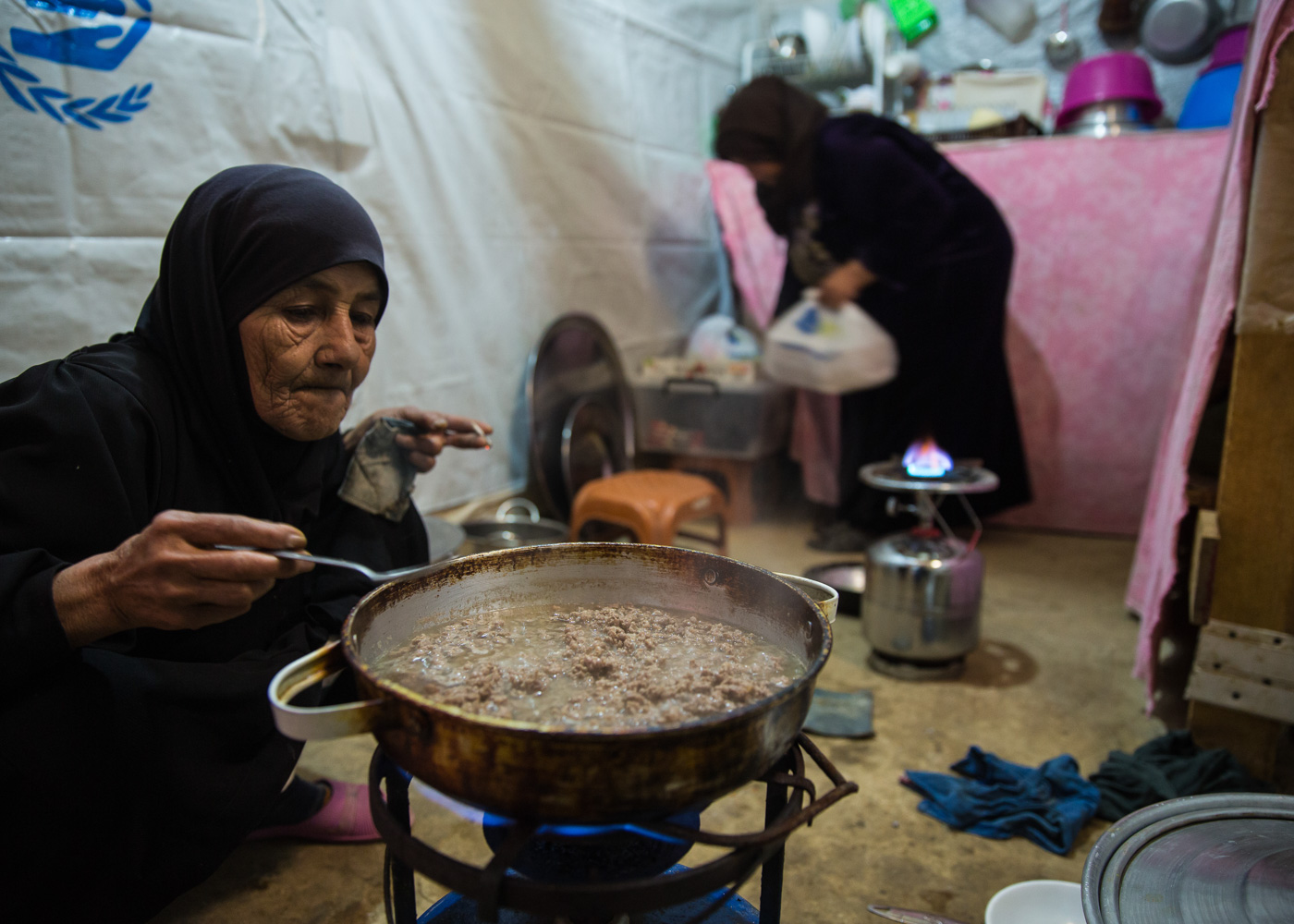
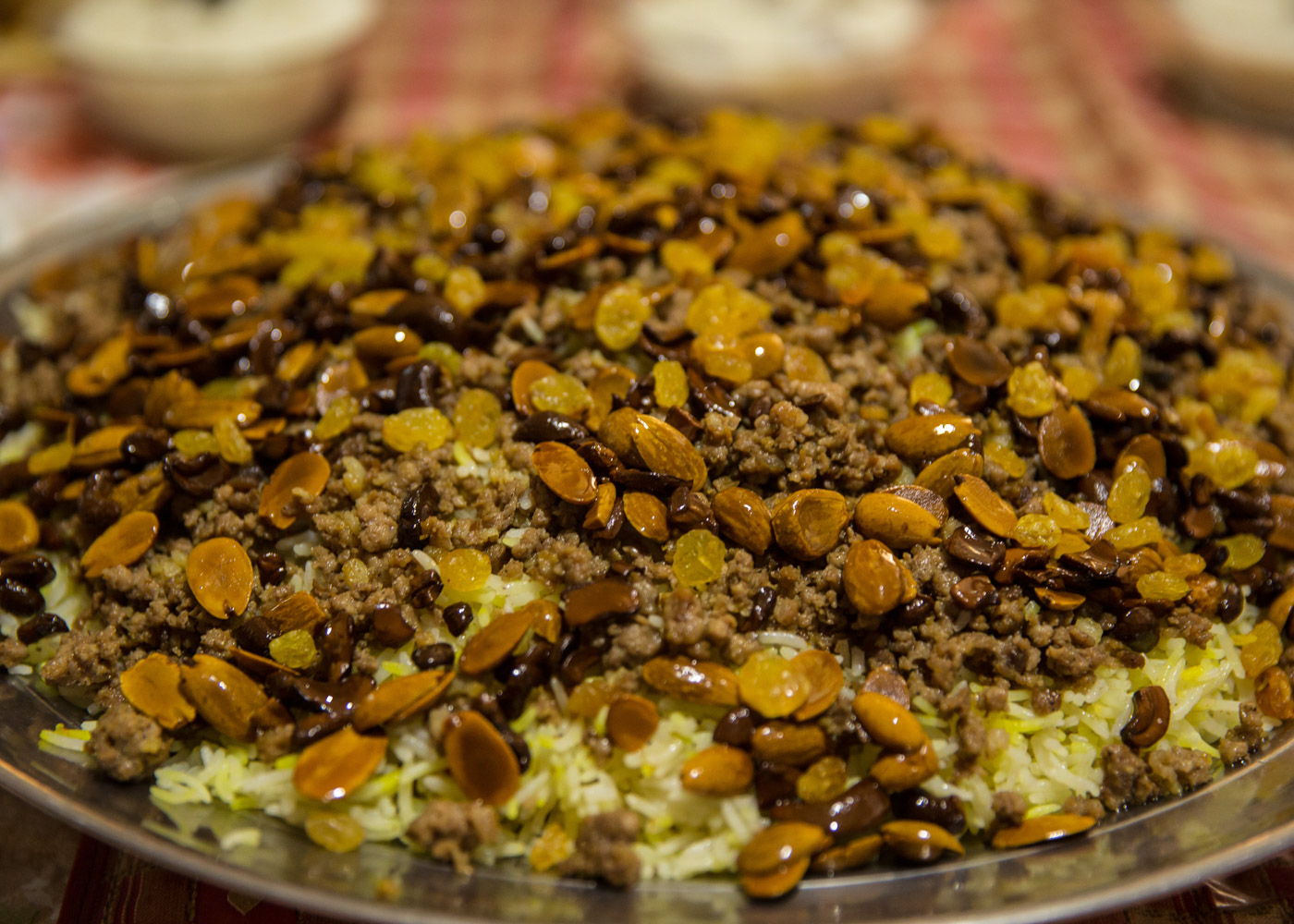
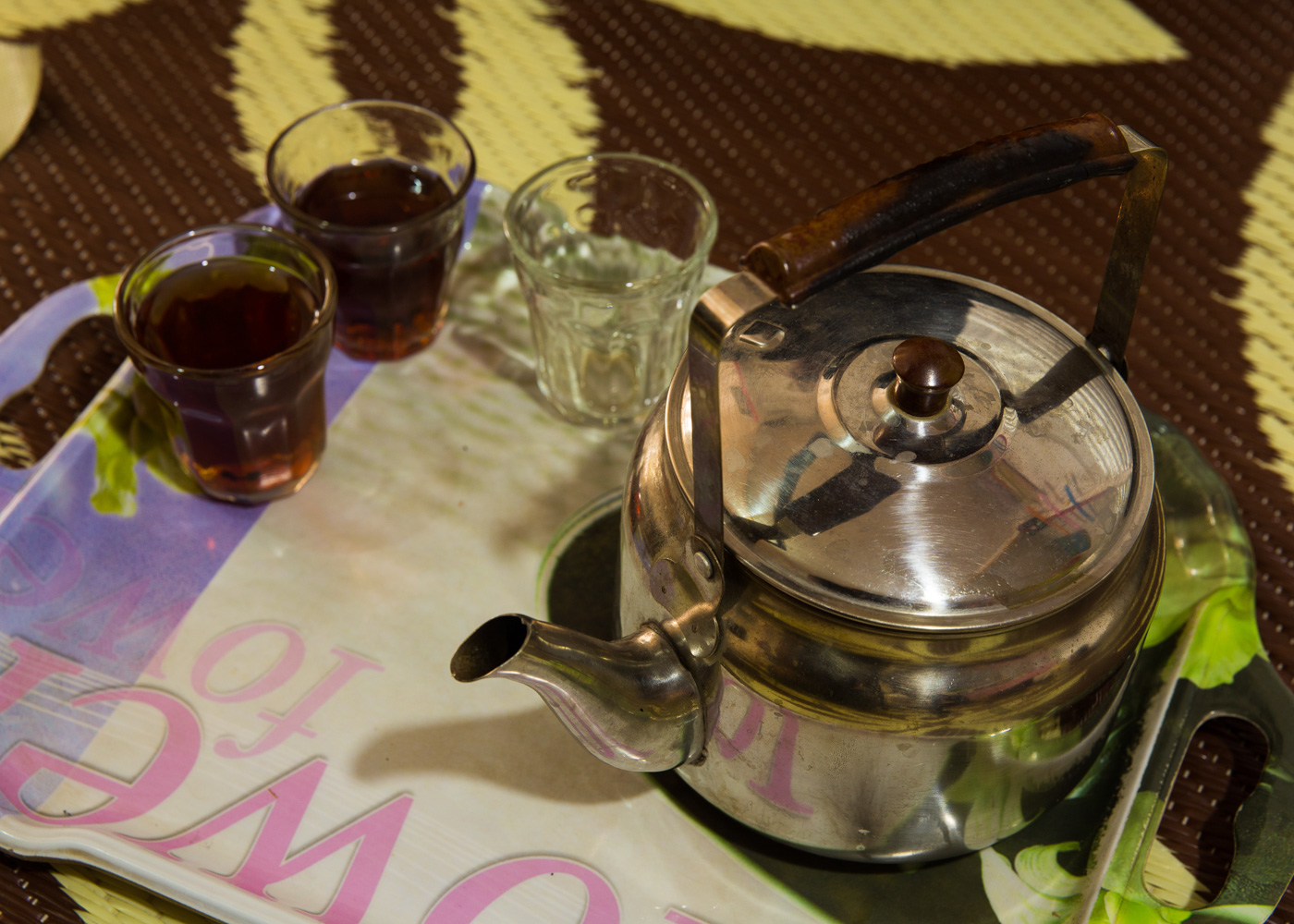
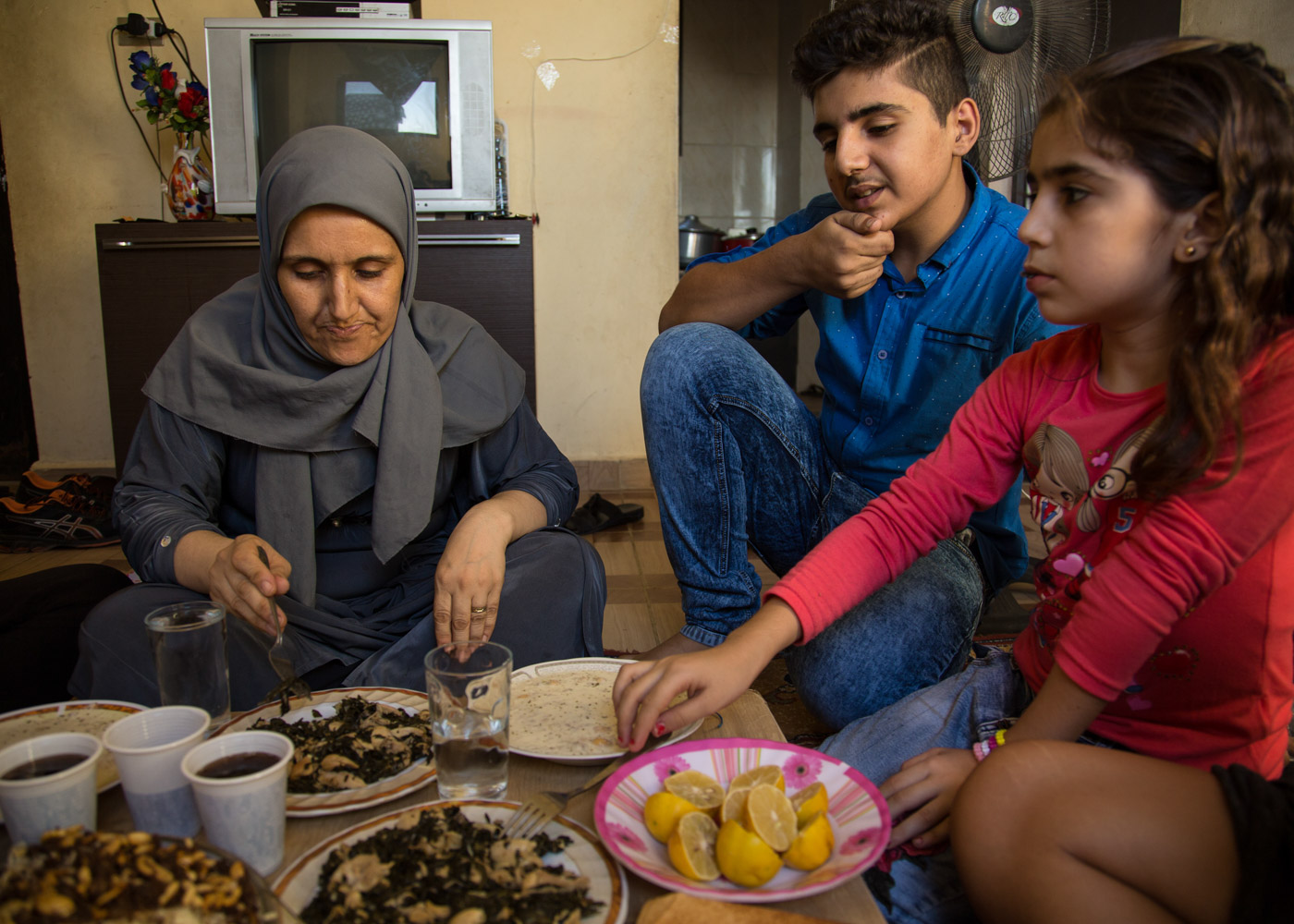
Eating together, it was explained to me, is so important in Arab culture, that shooting video and photography while we were all eating would be disrespectful to the sharing of food. Cooking and eating are some of the few moments in the camp where families find a bit of normalcy. It’s a time of sharing and enjoying, and it’s clearly something Syrians cling to as a way of coping with the trauma, upheaval and chaos of their current lives.
When I arrived in Lebanon, I thought Arab hospitality would be something comparable to my own Latino culture, but the way in which a total stranger is welcomed and offered anything in the house—even when a family has so little—was astounding. In the Arab world, life, culture and God all dictate that you treat any guest—even those you’ve never met—with love, generosity, utmost hospitality and care. Khalid explained that it’s about envisioning how one would hope to have the world treat you, and leading by example in order to create that world. It is a powerful ideology, particularly in the face of such poverty and despair.
Each time I returned to visit the school I was greeted by Khalid’s huge smile, and he’d ask when I would come for tea. Khalid is a man of so many talents and of such generosity; I often found myself looking up to him. He told me although he’s lost so much, he’s reminded every day how fortunate he is that his family was not torn apart by the war like so many others in the camp. It motivates him to be a good teacher, a good father, a good husband—and to help others do the same. I traveled to Lebanon to learn from these survivors—those who have truly been tested by life and come through it with an inexplicable kindness, a clarity and wisdom of what’s most important in life. Because beyond cultural boundaries, language and borders, sometimes all it takes to make a new friend is to find your shared values in the world.
Marco Bollinger is a Peruvian-American filmmaker. His documentary, SAFE ZONE, follows the lives of Syrian girls caught in the refugee crisis. To learn more, visit safezonefilm.com.

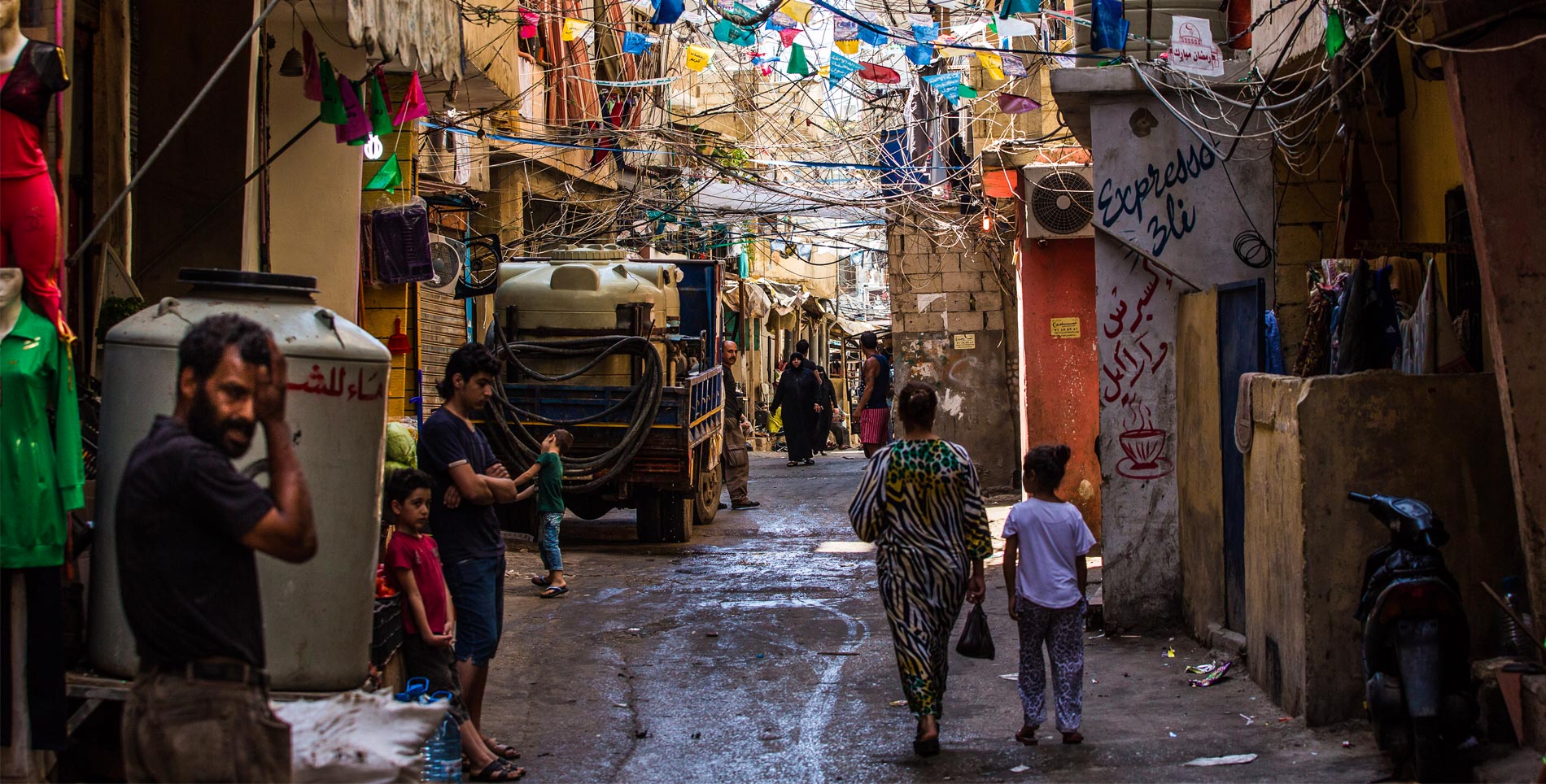

Our comments section is for members only.
Join today to gain exclusive access.